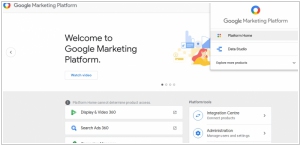Adobe Experience Cloud vs Google Marketing Platform
November 12, 2023 | Author: Sandeep Sharma
10
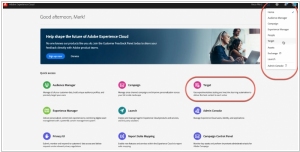
Adobe Experience Cloud gives you the most complete set of integrated digital marketing solutions available. It provides everything you need to organize, access, and personalize your marketing content. It gives you deep insights into what’s working with your customers and the ability to consistently deliver the best experiences to every customer across every channel.
Adobe Experience Cloud and Google Marketing Platform are two comprehensive suites of marketing tools that offer businesses a wide range of capabilities to optimize their digital marketing efforts.
Adobe Experience Cloud provides a suite of interconnected applications that cover various aspects of digital marketing, including analytics, advertising, personalization, content management, and commerce. It offers solutions like Adobe Analytics, Adobe Advertising Cloud, Adobe Target, and Adobe Campaign, among others, allowing businesses to create personalized experiences, manage advertising campaigns, analyze customer data, and deliver relevant content across different channels.
On the other hand, Google Marketing Platform combines several Google marketing tools, including Google Analytics, Google Ads, Display & Video 360, and Search Ads 360. It provides businesses with capabilities to measure and analyze website performance, manage and optimize advertising campaigns, and leverage data-driven insights to improve marketing effectiveness across different channels.
The key difference between Adobe Experience Cloud and Google Marketing Platform lies in their approach and ecosystem. Adobe Experience Cloud offers an integrated suite of tools that cater to various aspects of the customer journey, with an emphasis on content creation and personalized experiences. On the other hand, Google Marketing Platform focuses on Google's advertising and analytics solutions, offering a robust ecosystem for managing and optimizing digital advertising campaigns.
See also: Top 10 Marketing software
Adobe Experience Cloud provides a suite of interconnected applications that cover various aspects of digital marketing, including analytics, advertising, personalization, content management, and commerce. It offers solutions like Adobe Analytics, Adobe Advertising Cloud, Adobe Target, and Adobe Campaign, among others, allowing businesses to create personalized experiences, manage advertising campaigns, analyze customer data, and deliver relevant content across different channels.
On the other hand, Google Marketing Platform combines several Google marketing tools, including Google Analytics, Google Ads, Display & Video 360, and Search Ads 360. It provides businesses with capabilities to measure and analyze website performance, manage and optimize advertising campaigns, and leverage data-driven insights to improve marketing effectiveness across different channels.
The key difference between Adobe Experience Cloud and Google Marketing Platform lies in their approach and ecosystem. Adobe Experience Cloud offers an integrated suite of tools that cater to various aspects of the customer journey, with an emphasis on content creation and personalized experiences. On the other hand, Google Marketing Platform focuses on Google's advertising and analytics solutions, offering a robust ecosystem for managing and optimizing digital advertising campaigns.
See also: Top 10 Marketing software
Adobe Experience Cloud vs Google Marketing Platform in our news:
2023. Adobe brings product analytics to its Experience Cloud
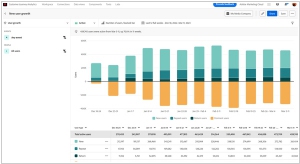
Adobe has introduced a novel analytics solution named Adobe Product Analytics, intended for product teams. The service is designed to provide such teams access to crucial metrics related to product lifecycles that were traditionally compartmentalized within different teams within an organization and had to be obtained through data analysts. Adobe Product Analytics is built on the omnichannel Customer Journey Analytics (CJA) service, with product teams being the initial targeted users. However, Adobe plans to create solutions for other personas as well. With this solution, all CJA users now have a shared analytics language and framework. The service also features a guided analysis capability to assist product teams in posing the right questions to gain insights, such as identifying patterns in engagement over time or recognizing obstacles in transitioning users from app usage to higher engagement.
2019. Latest Adobe tool helps marketers work directly with customer journey data
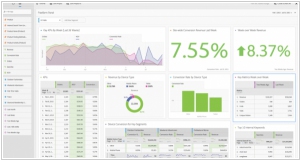
Adobe is actively advancing its Analytics capabilities within the Adobe Experience Cloud, an integrated platform designed to collect and analyze customer data for improved insights. Recently, the company introduced a new analytics tool that empowers employees to directly engage with customer journey data, aiming to enhance the overall customer experience. The customer journey encompasses numerous systems, including a company's data lake, CRM, and point of sale. This tool effectively consolidates data from multiple systems and channels, aggregating them within the data analysis workspace, which was initially announced in July. By centralizing and streamlining the data analysis process, Adobe is equipping businesses with the means to comprehensively understand their customers and optimize their interactions.
2018. Adobe acquires Marketo for $4.75 billion
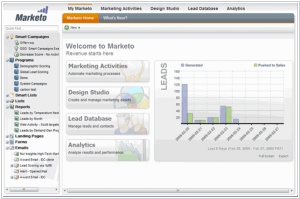
Adobe has announced its acquisition of the marketing automation company Marketo for a significant $4.75 billion. This strategic move positions Adobe strongly in the enterprise marketing arena, pitting it against major competitors like Salesforce, Microsoft, Oracle, and SAP. The acquisition not only bolsters Adobe's Marketing Cloud portfolio but also grants access to Marketo's expansive customer base of 5000 organizations. This presents a valuable opportunity for Adobe to drive revenue growth in this particular segment of its offerings, while intensifying its competitive edge within the enterprise market. With the integration of Marketo, Adobe is poised to further solidify its position and expand its reach in the realm of marketing automation.
2017. Adobe Campaign gets AI-features
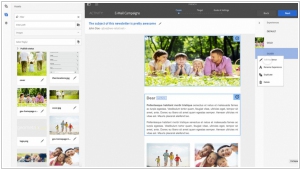
Adobe has unveiled several enhancements for its email marketing tools in Adobe Campaign. While many of these features are already accessible, such as improved dashboards, new email templates, and enhanced support for multilingual campaigns, the most intriguing additions are the new machine learning-powered capabilities. These advancements enable the identification of optimal subject lines for emails and, in the near future, suggest personalized images for specific recipients who open marketing emails. Another noteworthy predictive feature demonstrated by the company is a tool that predicts customer churn based on their email engagement patterns. Although this employs conventional machine learning techniques, the accuracy of such predictions heavily relies on the quality of the input data. When combined with data from Campaigns, this tool can anticipate when a customer is likely to unsubscribe from a service, offering valuable insights to businesses.
2015. Marketing platform Adobe Campaign adds new integrations
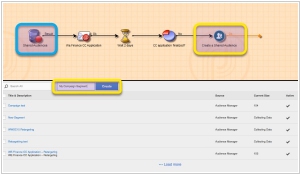
The latest integrations introduced in Adobe Campaign encompass various features aimed at providing contextually relevant email experiences, shoppable media encounters, and seamless integration across the Adobe Marketing Cloud solutions. The objective is to empower marketers with the ability to capture the most appropriate email content precisely when a prospect opens an email. This is made possible by leveraging contextual data obtained from Adobe Target and Adobe Campaign, including information such as purchase history, interests, time, location, demographic details, and more. The email content can dynamically adapt while it resides in the inbox or even be updated later as additional contextual data is gathered. Moreover, integration work has been done with Adobe Experience Manager to automate the personalization process, reducing the need for manual coding and catering to the drag-and-drop approach preferred by many marketers. Adobe strives to deliver enhanced capabilities that enable marketers to provide personalized experiences effortlessly.

